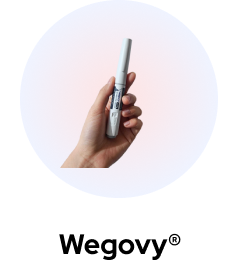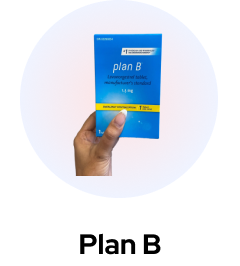If you’ve been considering starting Ozempic, or have just begun the medication, you may be curious about what foods you should avoid to minimize the side effects related to nausea.
In this article we’ll cover all of the information you need to know, including:
- Foods you should avoid
- What exactly Ozempic is and its uses
- People who should avoid using Ozempic
- Our list of five foods to avoid while on Ozempic
- Our list of four foods you can eat while on Ozempic
- Foods to avoid nausea
- Our top tips for how to obtain the best results with Ozempic
Let’s begin!
What Food Should You Avoid While Taking Ozempic?
Ozempic works by reducing your blood glucose (sugar) levels. Therefore, you should avoid foods that may cause a significant spike in your blood sugar levels. This will allow the medication to work most effectively.
This includes:
- Foods high in sugar (eg, ice cream, cake, candy, or soda)
- Food high in fat (eg, pizza, tacos, chips, cheese, milk, bacon, sausages, steak, lamb, ham, nuts)
- Alcohol (eg, wine and beer)
- Carbohydrates (eg, pretzels, cereal, and white bread)
- Caffeine (eg, coffee and tea)
- Fruits or vegetables high in sugar (eg, sweetcorn, mangoes, grapes).
Restricting these foods and making healthy changes to your diet while on Ozempic will not only help you feel your best, it will also help you to achieve the best results.
What Is Ozempic and What Is It Used For?
Ozempic is the brand name for semaglutide, a once a week injectable medication, used for the treatment of type 2 diabetes. In Canada Ozempic is marketed by Novo Nordisk, though you may also see it under other brand names, including Wegovy or Rybelsus.
Semaglutide is used to stimulate insulin production, which lowers blood glucose levels. This can lead to positive health outcomes in diabetics. When compared to other diabetes medications, semaglutide shows a greater reduction in insulin resistance.
A side effect of Ozempic is that it can promote effective weight management, especially when paired with lifestyle changes, such as a healthy diet and exercise. Thanks to this, in addition to being approved for the treatment of type 2 diabetes, the drug is also approved for use by those with a BMI over 27.
Additionally, Ozempic’s benefits include helping to reduce the risk of severe cardiovascular events, such as heart disease, stroke, or even death.
How Does Ozempic Work?
Ozempic works by copying the bodily actions of incretin glucagon-like peptide-1 (GLP-1) receptor agonist. GLP-1 is a hormone that occurs naturally and stimulates insulin production.
When insulin levels are high in the bloodstream, they process glucose into energy instead of storing it in your cells. Since Ozempic mimics this hormone, it lowers your blood glucose levels.
It can also suppress appetite and increase satiety (a feeling of fullness following meals), which can help with weight management in patients.
Who Should Not Take Ozempic?
You should not take Ozempic if you have a personal or family history of pancreatitis (inflammation of the pancreas) or thyroid cancer. Additionally, if you are considering conceiving, or are pregnant, you should discuss your plans with your medical team.
More serious known side effects of Ozempic may also include:
- Hypoglycemia (typically seen if you overdose on semaglutide)
- Kidney problems
- Alterations in vision
- Allergic reactions.
If you experience any of these more serious side effects, stop your use of Ozempic immediately, and contact your medical team, or go to the ER at your local hospital.
Additionally, there are a number of medications, supplements, and conditions that interfere with Ozempic or stop it from working at maximum efficiency.
Be sure to discuss your medical history and any prescribed drugs you may be taking with your medical team before starting the medication.
5 Foods to Avoid While Taking Ozempic
When taking any diabetes medication (for example, Metformin), you should be mindful of your diet. Similarly, for maximum results, you should restrict certain foods while taking Ozempic. However, you do not need to entirely eliminate any of the following food types — moderation is key!
You may also find that avoiding certain foods helps with any side effects, including nausea (commonly reported among Ozempic users, especially when beginning the drug).
As always, consult with your medical team to come up with the best nutrition and medication plan for you.
Fried, Greasy Foods
Foods that are high in fat, such as fried or greasy items, can exacerbate some side effects of Ozempic, such as nausea, diarrhea, bloating, gas, or other stomach symptoms.
Additionally, these foods are also typically high in trans fats, which are counterproductive to weight loss.
Refined Carbohydrates
This group includes common foods such as white bread and pasta. While these are fine in moderation, they are generally high on the glycemic index, meaning they are quickly converted into glucose.
This can or even counteract the glucose-lowering effects of Ozempic, so you should pay attention to the amount of refined carbohydrates you consume.
Sugary Drinks and Foods
Consumables high in sugar, particularly those found in sodas and high-sugar foods, can cause rapid spikes in your blood glucose levels.
That makes Ozempic less effective, as well as leading to high blood sugar and overall weight gain.
High-Glycemic Vegetables
While still great to enjoy in moderation, high-glycemic (meaning quickly converted to sugar) vegetables are not ideal for weight management or when taking Ozempic.
High glycemic vegetables may include:
- Potatoes
- Carrots
- Beetroot
- Corn.
Alcohol
Unfortunately, alcohol can cause significant spikes or drops in your blood glucose levels. This means that anyone monitoring their blood glucose (aka, diabetics) or those taking semaglutide medication for weight management should moderate their alcohol intake.
If you’re unable to omit alcohol from your diet completely, be sure to drink in moderation only.
What Foods Can I Eat While Taking Ozempic?
While taking Ozempic you should aim for a balanced and healthy diet, accompanied by plenty of water (around half a gallon a day).
As well as including the following in your diet, be sure to consult your medical team, as they may have further recommendations, or be able to put together a personalized plan for you.
Low-Glycemic Vegetables
Low-glycemic vegetables are full of nutrients, fiber, and taste amazing!
Try adding greens, onions, tomatoes, or cucumbers into your diet for all of the added flavor with little-to-no glucose spikes.
Low-Glycemic Fruits
While you should avoid certain fruits, you can still enjoy many others. Low-glycemic fruits you can enjoy include:
- Grapefruit
- Cherries
- Pears
- Apples
- Oranges.
Whole Grains
Maximizing your health doesn’t necessarily mean cutting out all carbs. Instead, choose a little more carefully.
This may mean opting for whole grains and seeds when you can (eg, brown bread over white, or brown rice over white), as well as using other grains, such as barley and quinoa, as your meal base.
Lean Proteins
To optimize your health, forgo fatty meats and opt for lean proteins instead.
These include:
- Eggs (especially egg whites)
- Fish
- Chicken
- Turkey.
Additionally, there are many plant-based lean proteins, such as:
- Lentils
- Tofu
- Beans.
Can I Eat Bananas on Ozempic?
Yes, you can eat bananas while taking Ozempic. Bananas are a healthy fruit that provides essential nutrients such as potassium, vitamin B6, and fiber. These nutrients can benefit your overall health and support your weight loss journey.
When considering bananas on Ozempic, it’s important to note their glycemic index (GI). Bananas have a moderate GI, which means they can cause a slower increase in blood sugar compared to high-GI foods. This makes them a better option for those monitoring blood sugar levels. However, eating bananas in reasonable portions can help manage your blood sugar effectively while on Ozempic.
To optimize your diet on Ozempic, balance bananas with other low-GI fruits like berries, apples, and pears. These fruits provide fiber and essential nutrients while keeping your blood sugar levels stable. Including a variety of fruits in your diet can help you stay full longer and maintain a healthy weight.
Can You Eat Sweets on Ozempic?
You can eat sweets while taking Ozempic but in a moderate amount. Ozempic helps manage blood sugar levels and supports weight loss, so consuming sweets sparingly can prevent spikes in blood sugar and support your weight loss goals.
When eating sweets on Ozempic, focus on portion control. Small amounts of sweets occasionally are less likely to interfere with your blood sugar management. Opt for healthier alternatives like fruit or low-sugar desserts to satisfy your sweet tooth without compromising your progress.
Avoid high-sugar foods and beverages, as they can cause rapid increases in blood sugar levels and negate the benefits of Ozempic. Instead, choose sweets that have natural sugars and pair them with fiber-rich foods to slow sugar absorption. Examples include a small piece of dark chocolate with nuts or a fruit salad.
Consult with your healthcare provider or a registered dietitian to tailor your diet plan. They can help you find a balance that allows occasional sweets without hindering your weight loss journey.
Can You Eat Peanut Butter on Ozempic?
Yes, you can eat peanut butter while taking Ozempic. Peanut butter is a nutritious option that provides healthy fats, protein, and fiber, which can help you feel full and satisfied. These nutrients are beneficial for maintaining stable blood sugar levels and supporting weight loss.
When eating peanut butter on Ozempic, choose natural peanut butter without added sugars or hydrogenated oils. A serving size of about two tablespoons is recommended to avoid excess calorie intake. Pairing peanut butter with whole-grain bread or fruits can enhance its benefits and manage blood sugar better.
What Foods Can Help Me Avoid Nausea While Taking Ozempic?
Unfortunately, nausea is a common side effect of taking Ozmepic. However, there are many things you can do to minimize this.
If experiencing nausea, try to eat plain, bland, low-fat foods, such as crackers, toast, or rice, and abstain from fried, greasy, or overly-sweet foods.
Foods high in water content, such as soup or jello, will also help to combat nausea while also hydrating you.
Additionally, avoid lying down after eating, eat slowly, and drink plenty of water. Going outside for some fresh air and moderate exercise may also minimize the effects of nausea caused by Ozempic.
How to Obtain the Best Results While Taking Ozempic?
If weight management is one of your key reasons for taking Ozempic, be sure to consult your medical team to put a plan in place along with your medication. This will likely involve implementing a healthy diet and regular exercise into your routine.
You should aim to lose around two pounds a week until you reach your weight goal. This is considered to be the safest and most sustainable way to manage your weight.
In general, eating healthily (featuring lots of vegetables, fruits, whole grains, and lean protein), as well as regular exercise will help you achieve the best results for you.
Stay consistent and listen to your body, as well as following the advice of your medical team.
Key Takeaways
While on Ozempic, you should consider your diet carefully to maximize the benefits of the drug and minimize unpleasant side effects, such as nausea or stomach issues.
This involves staying away from:
- Greasy and fried food
- Sugary food or drink
- Refined carbohydrates
- High-glycemic fruits and vegetables
- Alcohol.
However, you can still enjoy plenty of delicious food, with moderation. These include:
- Low-glycemic fruits and vegetables
- Whole grains
- Lean protein.
If you’re taking Ozempic to assist with weight management then it’s essential to pair the medication with a healthy diet and exercise. This will not only help you achieve your goals faster, but will also make sure that you do so safely and consistently.
Be sure to consult with your medical team before starting Ozempic, as there are a number of more serious side effects you should be aware of, especially if you are on any other prescription medications or have a significant personal or family medical history.
Ozempic Foods to Avoid FAQs
What is one of the side effects of Ozempic?
A side effect of Ozempic is that it can promote effective weight management, especially when paired with lifestyle changes, such as a healthy diet and exercise. Thanks to this, in addition to being approved for the treatment of type 2 diabetes, the drug is also approved for use by those with a BMI over 27.
What should I not eat while having Ozempic?
If you’re taking Ozempic, you should avoid:
- Fatty fried foods
- Refined carbohydrates
- High-glycemic vegetables
- Sugary foods and beverages
- Alcohol.
What are the best foods to eat while having Ozempic?
You should aim to eat a healthy and balanced diet while using Ozempic. This will not only assist with glucose management for type 2 diabetes, but will also aid your weight management and overall cardiovascular health.
Choose:
- Low-glycemic fruits and veggies
- Lean proteins
- Whole grains.
How can I maximize my weight loss on Ozempic?
As Ozempic is a prescription medication, you should talk to your medical team to come up with a weight loss plan that suits your individual needs. Generally speaking, supplementing Ozempic with a healthy diet and regular exercise are excellent and safe ways to support your weight management.












 (US)
(US)